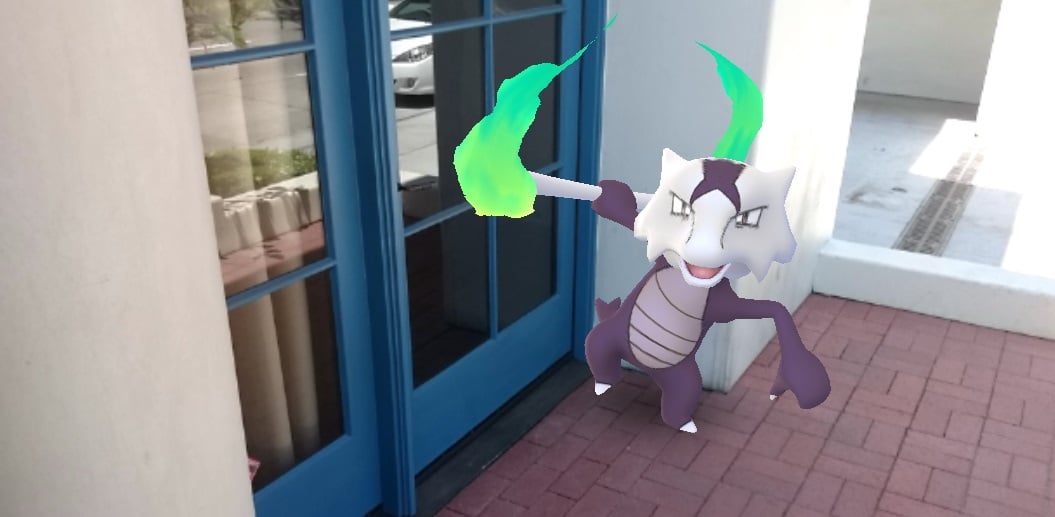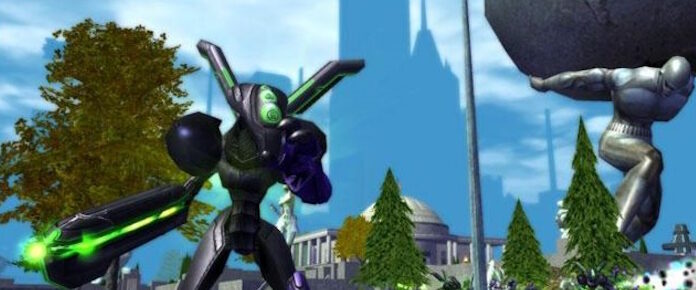
Don’t let that title fool you, dear readers; we’re not really talking about NFTs, blockchain, or the metaverse itself. Instead, we’re addressing the oft-repeated lie that NFTs and blockchain games will miraculously facilitate item-sharing across quite different virtual world games. The idea of data sharing across different games and genres isn’t new, of course, but it’s also not common. And yet we’re seeing it via the new Pokemon Go Plus+ and the two games it interacts with: Pokemon Go and Pokemon Sleep. The device shares not game-earned progress but real-life sleep data between two different games that use said data in different ways.
After I posted initial impressions of the devices and new gameplay, Niantic started to give players some bad advice about factory resetting the Plus+. That led to data issues and new bugs in both games. In today’s Massively on the Go, I’m going to talk about how Niantic’s latest goof only drives home another potential challenge in the tech behind sharing and exchanging player data across various games: Allowing inept developers access to other companies’ data also allows them to screw it all up in dramatic ways, costing everyone embarrassment and lost progress.
Assessing the pitfalls
Now first, I want to be clear that the Plus+ debacle is minor and not wholly ground-breaking. And while it’s rare, we do indeed see data shared between games as a working concept already, especially in BioWare and TellTale games, not to mention generations of Pokemon games. We also have apps like Google Fit that share our data with other apps. What we don’t have are gaming-exclusive devices recording data and sharing them with other games.
There’s also the nature of Niantic’s error. A few hours of sleep lost and screwing up two games… it could be far, far worse. Functional issues for any device related to Pokemon GO is sadly normal at this point, so players expect it. I’m not the only person who has been public about losing data/progress, but the other affected people I’ve talked to are just jaded about the failures Niantic constantly throws at us. They may complain to people around them, but Niantic continually ignoring the Pokemon No/#HearUsNiantic movements have people saving their internet breath for companies that might actually, you know, listen.
In other words, players are accustomed to expecting Niantic-built things to fumble. As we did with the failed Hoenn Tours, people lower the bar for Niantic. It’s why even though this isn’t a huge deal, we still have to point out that for an MMO company with the kind of incomes Niantic does, transferring saved data should be relatively easy. We shouldn’t lower the bar to meet falling standards, especially for a company that’s rolling in cash (despite clearly not using that money wisely). Worse, though, is Niantic’s treatment of and reaction to its studio partners, which leads everyone to suspect the partnerships and tech were never meant to last.
Building across the gaps
So let’s talk about the relationship between this and blockchain data sharing. We mentioned before how one game developer, Xavier Coelho-Kostolny, noted that when it comes to potential item cross-over, Unity and Unreal can’t even agree “whether Y or Z is the up direction in a 3D space.” The fact that game engines alone can’t agree on the visuals means translating items between games is pretty dang hard, but shared data that can be used in different ways could be an easier starting point.
While certainly not an NFT, the recent Pokemon GO Plus+’s shareable sleep data between two different games give similar vibes: You are building data in one area and sharing them with another. That isn’t as intense as, say, refining a sword over years, but it’s a baby step. The amiibo could also have gone this route – that being Nintendo’s data-holding toy used with the Nintendo 3DS, Wii U, and Nintendo Switch. You could argue amiibo also take data that can be passed around to different games, but thus far, outside of Universal Studios’ Super Nintendo World, we haven’t seen amiibo used outside of Nintendo products.
Even with that exception, Nintendo is quite connected with that project. Big N not only kept amiibo restricted to its own products, but all the data you save to them is game specific, not shared. So amiibo issues across multiple games have been super light, rarely sharing data beyond “This is character X and it unlocks item Y.” Any data you record stick with that game, so if you had Smash Bros data on your Mario amiibo but wanted to save data on it while playing Mario Party, you have to delete your Smash data; none of the previous data are relevant or can cross-over. The same is true for Universal data saved to the amiibo Power-Up Bands, in that any data contained in them seem unrelated to anything else.
The point here is that even within the same company, the idea of building on data from one game to another via a device is difficult. Yes, there are some games/webtools that let you carry save data from one game to its sequel, but that’s not quite the same thing that’s been pitched by NFT shills. If a major company like Nintendo is only just now vaguely connected with devices sharing the same data across different games, it should serve as a reminder that this may not be a wise idea.
Burning bridges
While Nintendo has been careful about its IPs and use of datasharing, the same can’t be said of The Pokemon Company. The previously mentioned device failures due to Niantic telling people to factory reset the Plus+ were obviously a bad call, but TPC has been making a few of those itself lately, such as allowing Scarlet and Violet to release in a buggy state. But choosing Niantic as a partner is seeming like a bad call in and of itself.
To note, we’ve covered other Pokemon games in the past, including non-main-series-games Pokemon Unite, which is not made by TPC. I’ve also personally covered Pokken, a fighting game made by Bandai-Namco. While I may not be actively playing those games, I can recommend them; I even enjoyed them. What’s important to note here is that while covering both games for long stretches of time, I never heard either company attempt to blame The Pokemon Company for their shortcomings. Ever.
Niantic seems to do this any time it’s able to – not just for the recent Pokemon Go Plus+ issues but also during the Squirtle Community Day debacle. The company blamed both the Trainer’s Club login method and the players who used it. The problem, though, is that multiple users confirmed that the Trainer’s Club login was working on other platforms, meaning the fault was with Niantic. This, perhaps, was why TPC’s official Twitter page released the news of the makeup event, not Niantic.
So it should come as no surprise that Niantic has blamed the device, which again, worked fine in Sleep, on Nintendo’s device.
By itself, this isn’t so different from when the original Plus came out. Heck, there may have been issues there too, as there wasn’t another device we could test the Plus on to see how it functions. It didn’t carry any data, though.
The data carried by the Plus+ is possibly why Niantic had to assist with developing Pokemon Sleep: to help ensure the Plus+ data would work across the two very different games. The problem, of course, is that Niantic can’t be trusted to get, well, anything right these days. Just look at the warnings we’ve had to start including at the end of Niantic articles, or save yourself the time and just review the company’s most recent feature bungle.
So it should come as no surprise that despite working on Pokemon Sleep and having to make the Plus+ work in their own game for their own mechanic, Niantic still found a way to not only try to blame the parent company and the device creator but also threaten data on a shared device that impacted both games.
It’s not the first time, either. Niantic created issues in October 2022 with Zorua, poorly programming the pokemon so that it created unintended wild legendaries/mythicals/shinies/other super rare pokemon. Clever players in New Zealand then transferred some of these glitched pokemon to Pokemon HOME, where some were not reverted into Zorua, thus giving those players access to some very rare pokemon.
Again, this means Niantic already polluted another game with its incompetence. Admittedly, newer Pokemon games are becoming more accessible, so this is slowly becoming less of an issue for that series in particular, but that doesn’t mean Niantic’s carelessness should be overlooked. Allowing access to a free app that shares data is one thing. Allowing access to shared data that uses an expensive device is a whole lot more.
Perhaps this is also why POGO can’t receive pokemon from main games. TPC may be fine with Niantic screwing up its own game and data, but not with data from TPC’s games. But that does seem to be exactly what’s happening with Sleep data, especially when Nintendo is also involved.
Blockchain data are messy, so if even big gaming companies like Nintendo, The Pokemon Company, and Niantic can’t play together well enough to make it function and work without someone pointing fingers, there’s no way some random metaverse startup with NFTs in its eyes is going to magically pull it off.
 Massively OP’s Andrew Ross is an admitted Pokemon geek and expert ARG-watcher. Nobody knows Niantic and Nintendo like he does! His Massively on the Go column covers Pokemon Go as well as other mobile MMOs and augmented reality titles!
Massively OP’s Andrew Ross is an admitted Pokemon geek and expert ARG-watcher. Nobody knows Niantic and Nintendo like he does! His Massively on the Go column covers Pokemon Go as well as other mobile MMOs and augmented reality titles!

















